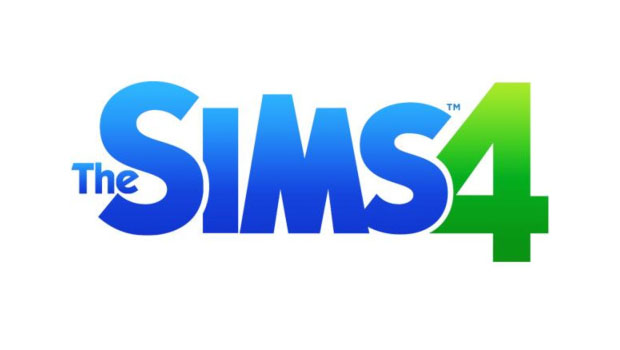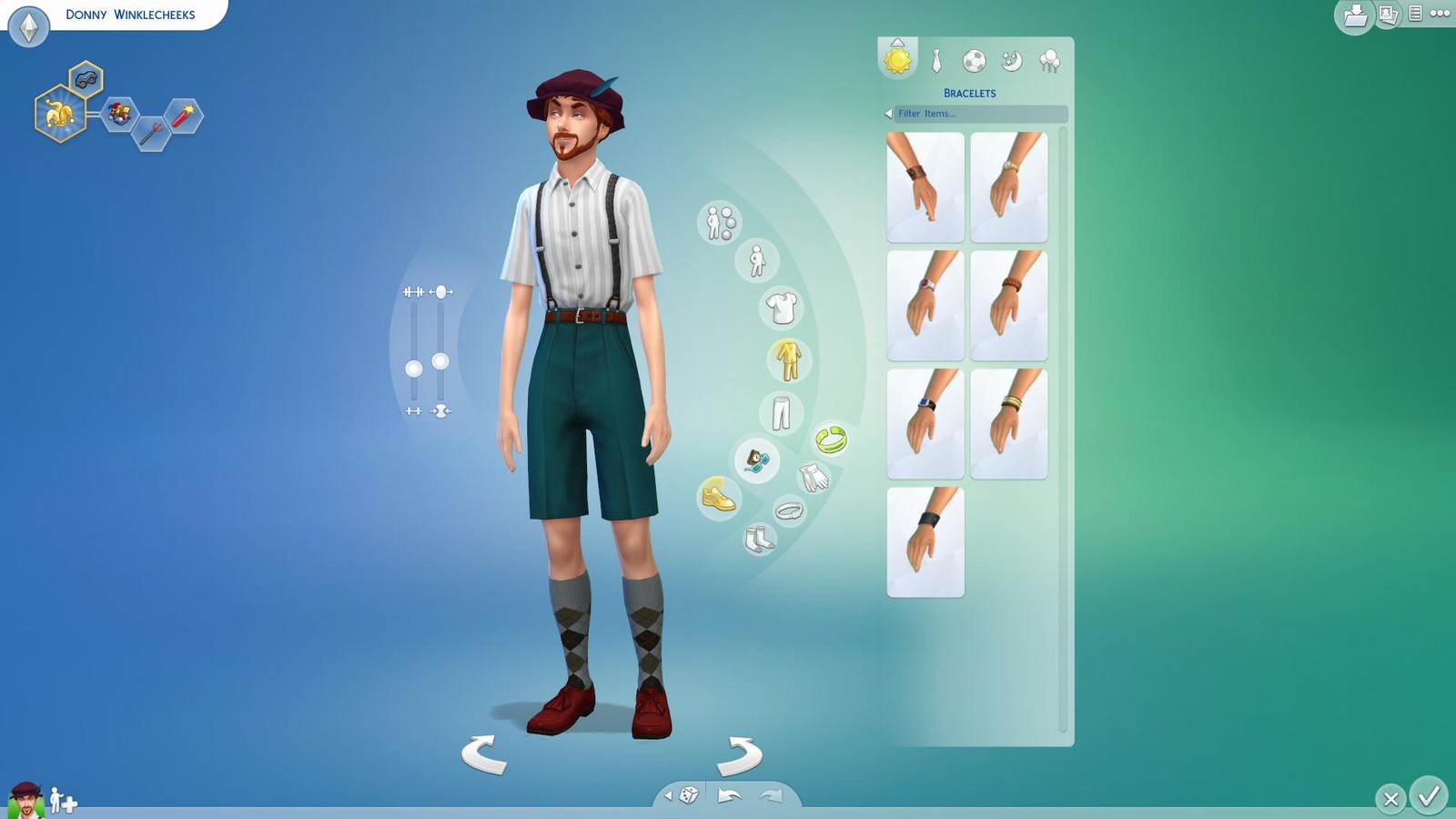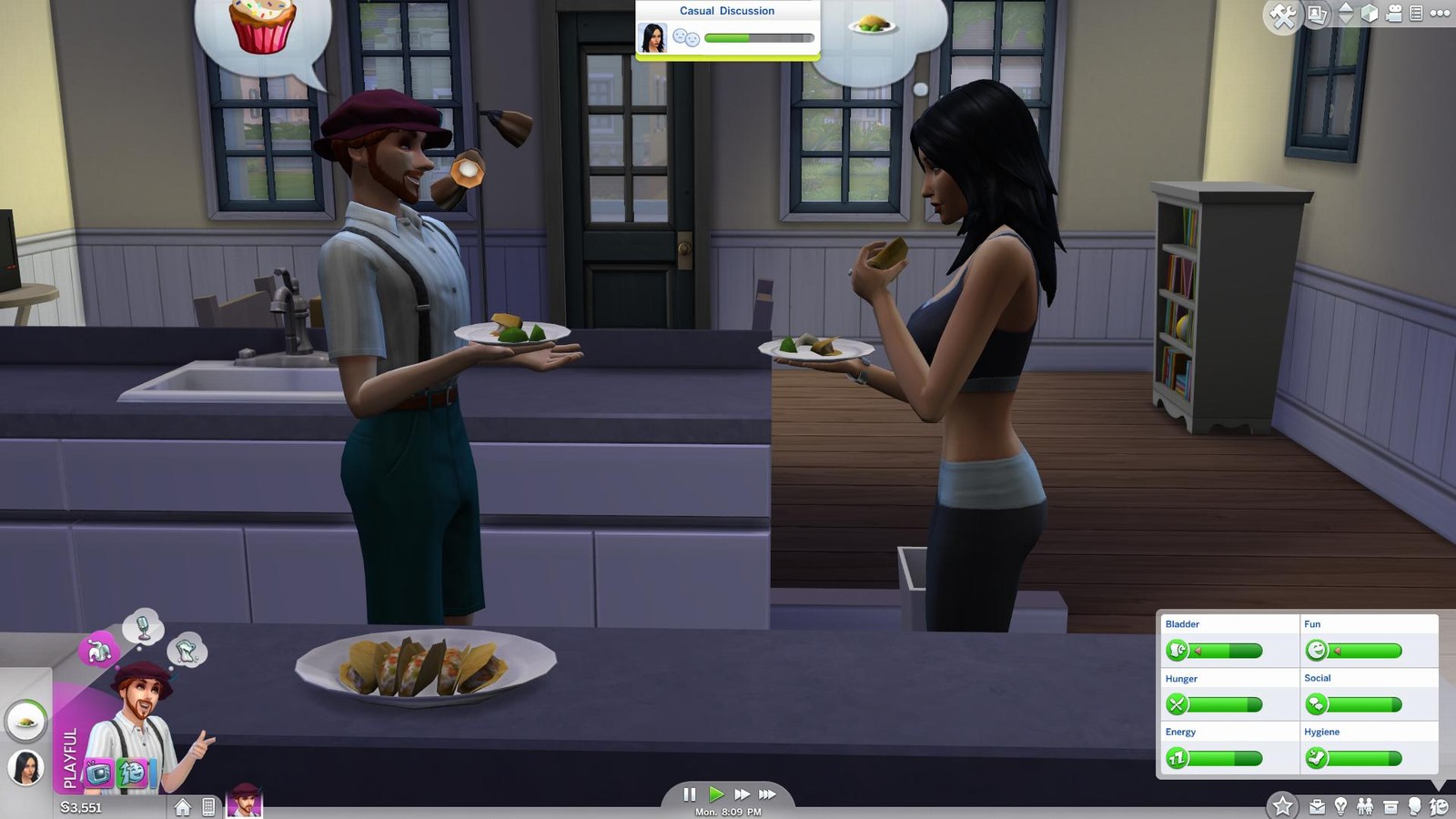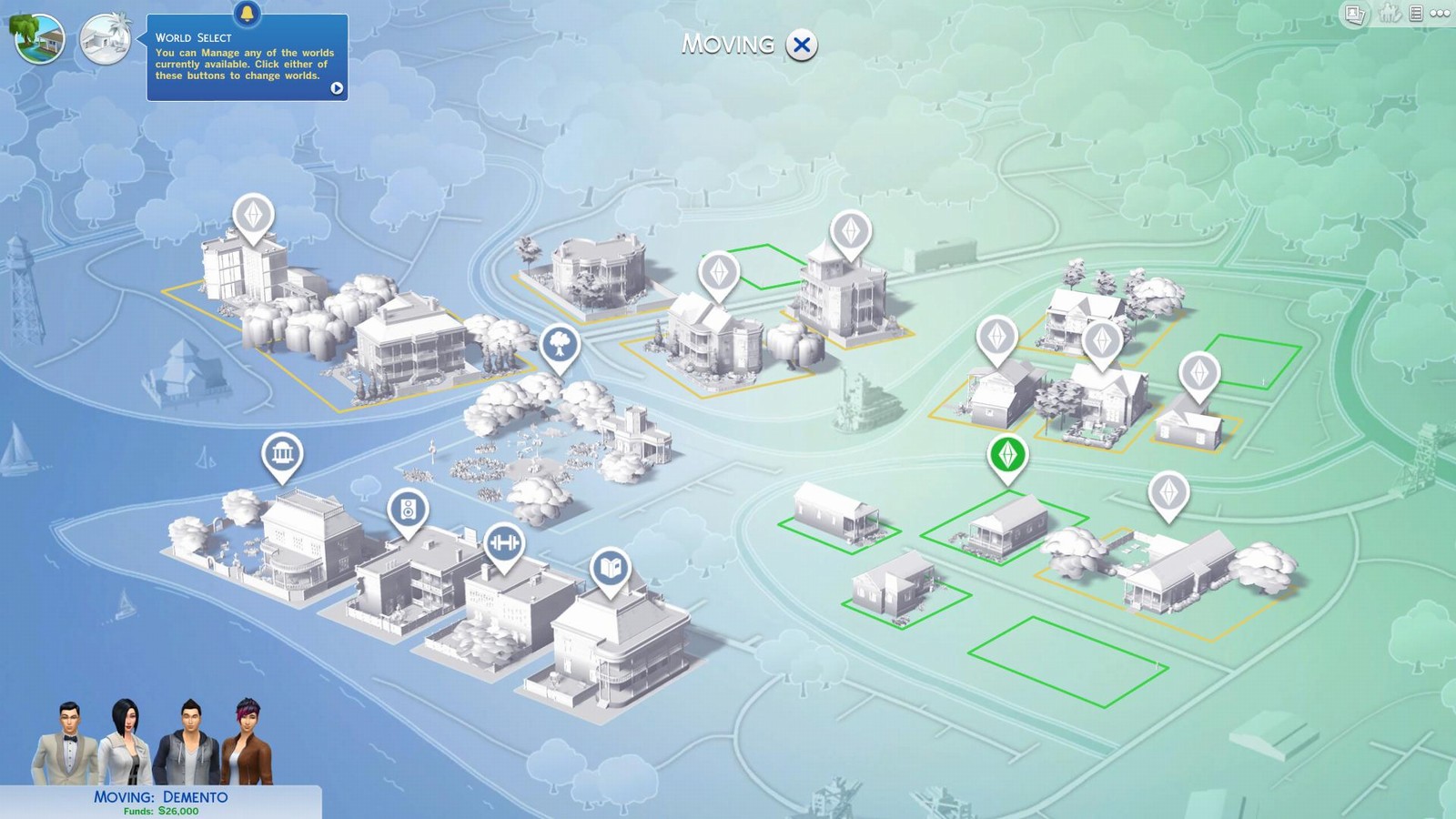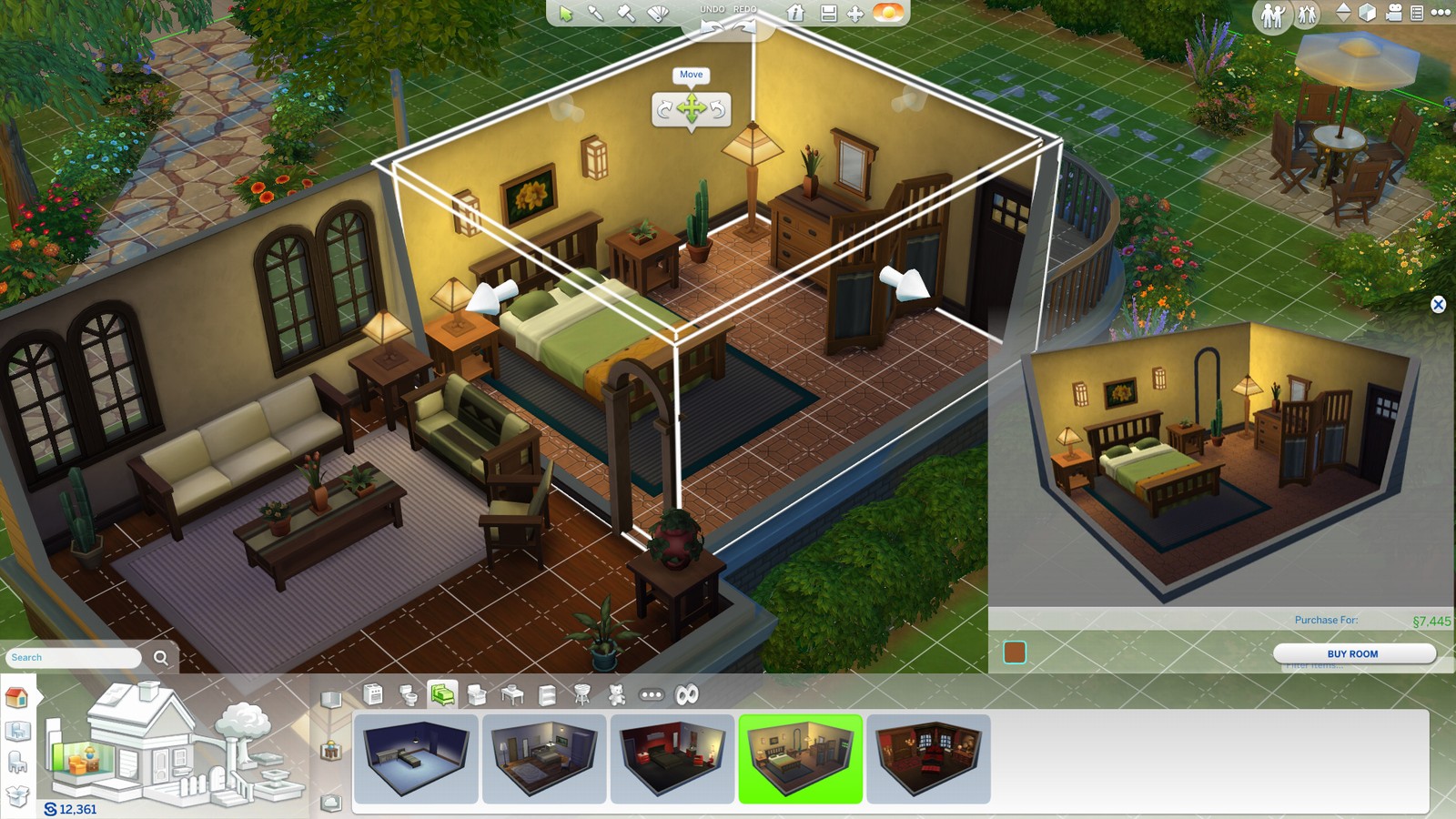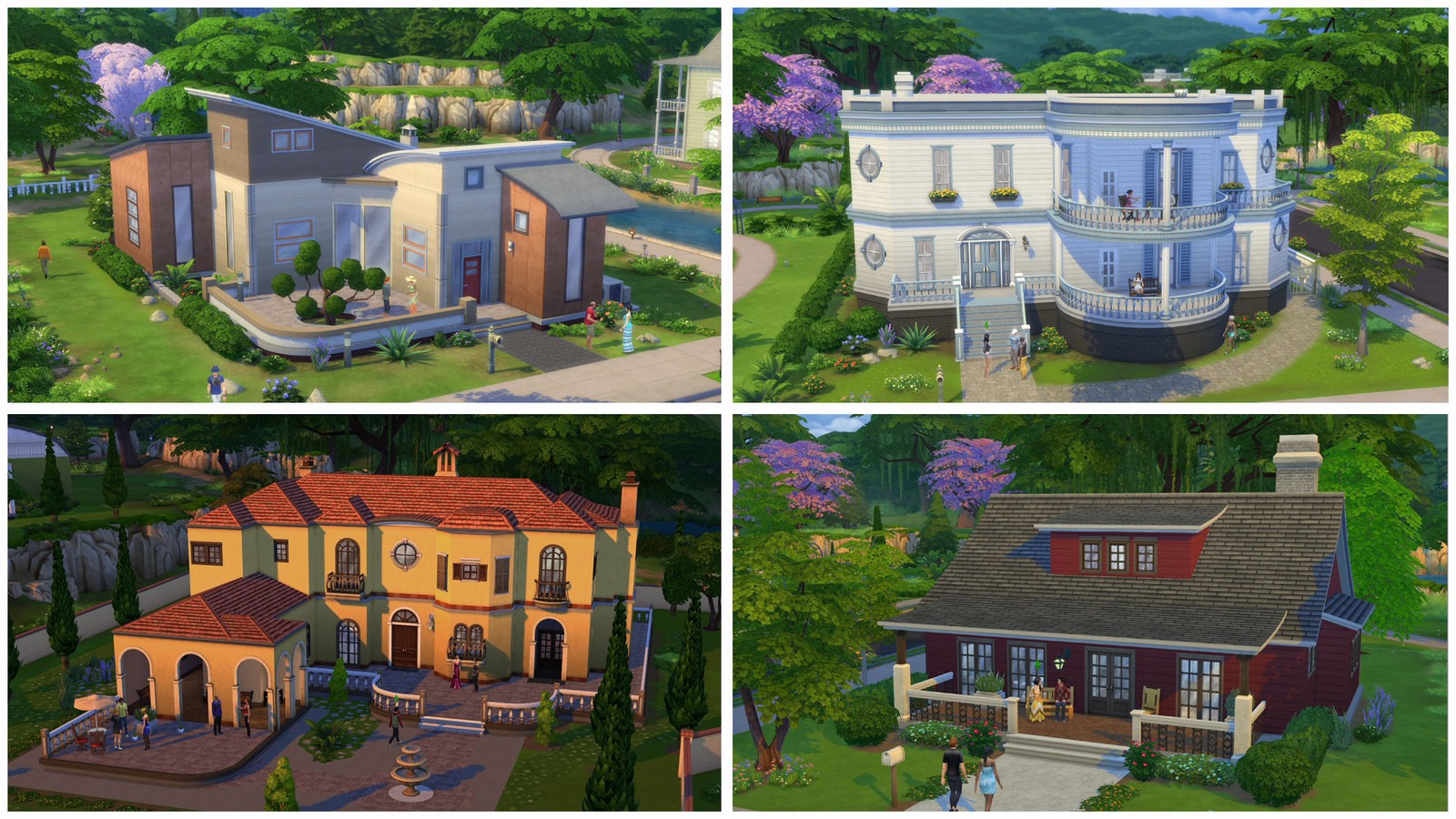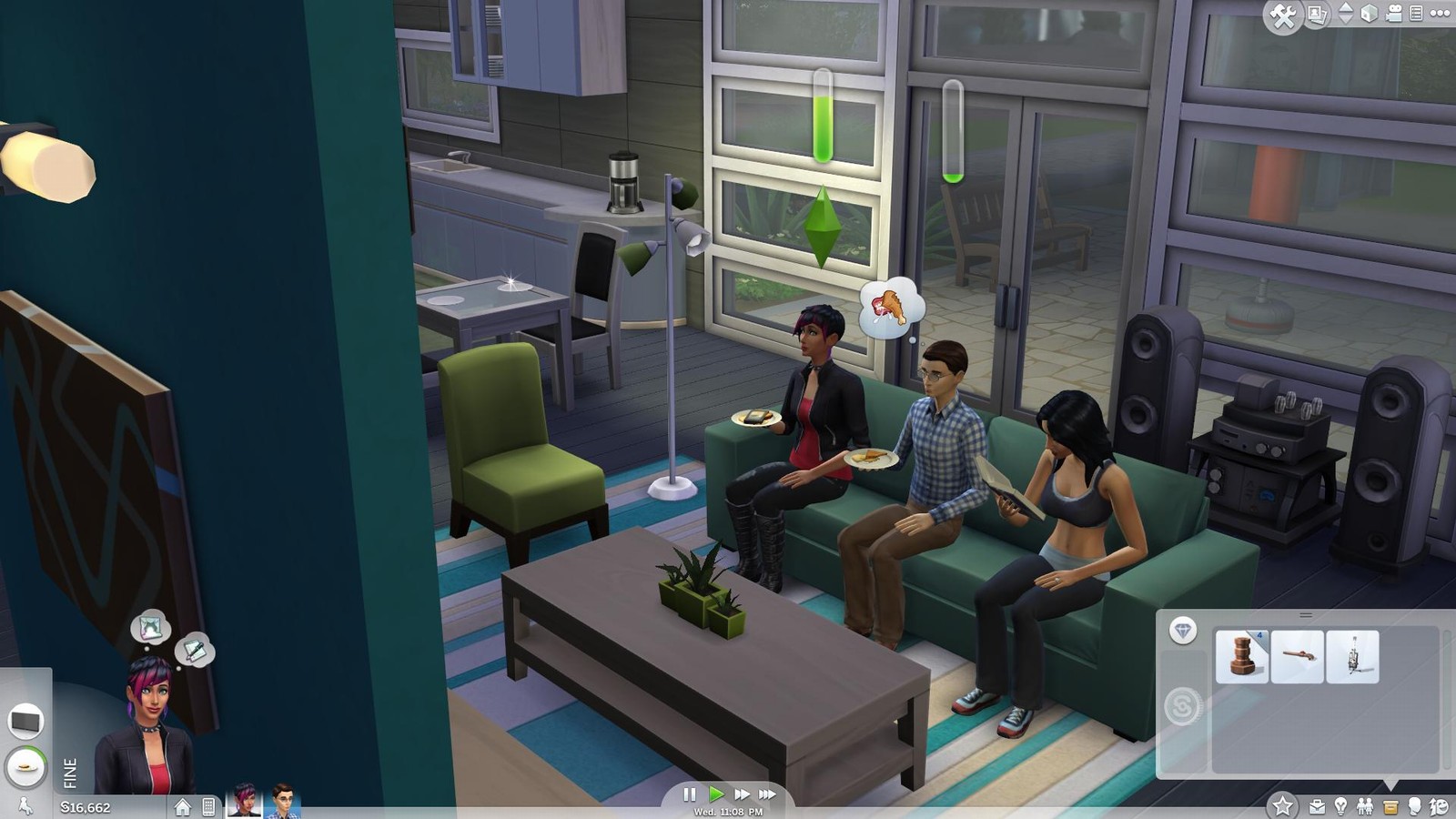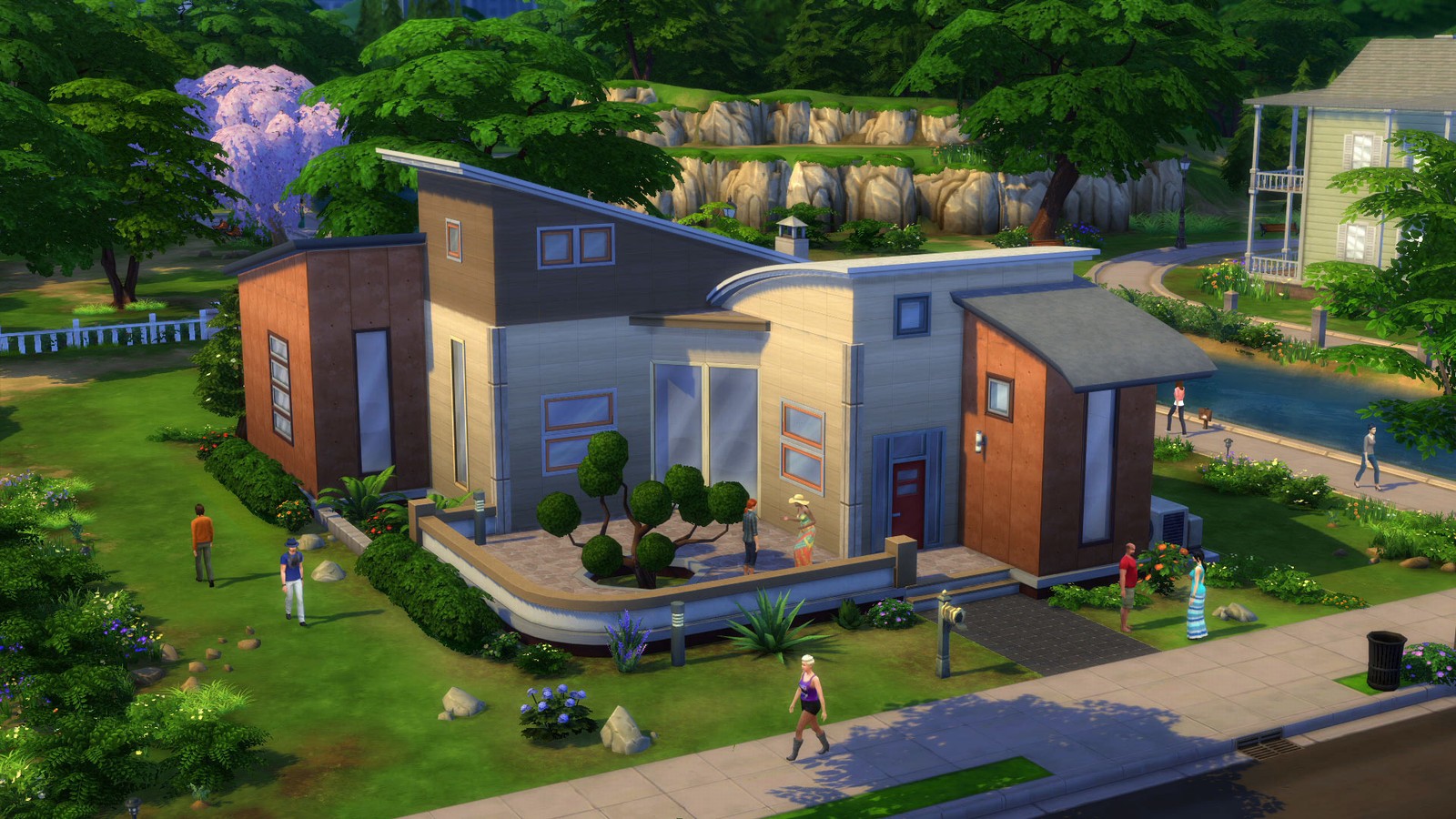Since the original The Sims came out in 2000, the Sims series has become one of the most successful game franchises I can think of. I say this not only because hundreds of millions of copies of Sims games have been sold in countries around the world, but because it’s one of the few games that I can talk about with my non-gamer friends, and they’ll at least be familiar with the life-simulation concept of the games.
Just from my personal experience, I think Sims players may be among the most diverse I’ve encountered, encompassing both casual and more mainstream gamers, as well as people who usually don’t play games at all. It’s easy to see the universal appeal of the Sims games, as they somehow manage to capture the quirks of everyday human life—including biological needs, academic and career aspirations, and social relationships—in a simplified but endearingly relatable form.
The Sims games have come quite a long way, each iteration introducing something new. The Sims 2 brought Sim genetics and multiple life stages, as well as a slew of expansions that added all kinds of features, from college life to changing seasons. The Sims 3 offered players a never-before-experienced level of customization on virtually everything, from the pattern and color of the furniture to fully customizable multi-toned hair color, as well as a seamless open neighborhood that allowed players to follow their Sims to any location in town and zoom in and out of various locations at will.
The Sims 4 certainly builds on the familiar The Sims formula, keeping intact much of the series’ trademark sandbox gameplay and expressive art style, with a perky soundtrack on par with previous Sims games and charming Simlish babble. It also introduces some noteworthy new features that greatly enhance the game experience, as reasonably expected.
Interestingly (and controversially) enough, though, it also seems to take a completely different approach from TS3 to the evolution of the series, opting to distill the series down to its essence and go back to its roots, rather than necessarily keeping all features offered in previous installations and simply tacking on even more features.
Where TS3 introduced more options and complexity at every turn, starting from its very graphic design, TS4 seems to communicate an almost Zen-like simplicity, a less-is-more attitude, and starting fresh. The modest start screen has a white blank-slate background, and while a splash of animation showcases some intriguing possible game situations front and center, it ultimately presents just two buttons, inviting you to play or create a household.
In fact, the first time you play, there’s only one option, and the game launches you straight into the Create A Sim feature, which is arguably one of TS4’s brightest highlights. As before, you can customize your Sims’ sex, hair color, eye color, skin color, clothing, body shape, voice, personality, and life aspiration. Compared to TS3, TS4’s Sims are somewhat more exaggerated, lively, and more reminiscent of TS2 Sims, but with improved modern graphics. I mean this in a good way, as I actually found TS3’s Sims almost too realistic looking for the series’ hallmark humor and prefer TS4’s return to a more whimsical style.
Customization is much easier and more powerful compared to TS3, allowing you to simply click and drag any facial or body part to sculpt a Sim’s appearance to your liking. (Skinny stick of a guy with a legendary behind? Now totally doable!) I really liked that the interface was so intuitive and simple, yet still offered an optional “detail mode” to fine-tune facial features. This time, you can also select one of many walking styles, adding yet another level of personality to each Sim’s movements.
Sadly, though, some of my favorite customization features from TS3 Create A Sim, such as custom hair and eye colors, as well as personalizing the exact textures and colors of my Sims’ clothing, are conspicuously missing. TS4 gives the player a decent color palette to work with, including unnatural complexions like blue and green, but it looks like the days of custom colors and textures are over—at least unless EA later releases an expansion that adds this functionality. It’s not a deal-breaker, but I found myself really missing the greater level of color and texture customization I’d gotten used to in the last game. The same limitation applies to the in-game building options and furniture objects.
In the same vein, gameplay is also a mix of new and pruned-back features. For instance, from what I can tell, your TS4 Sims all exist in one world, and no matter what neighborhood or town they live in (the game starts you off with two towns, both a little smaller than those from TS3), they’ll all be part of the same universe and able to visit one another. Probably as a result of this increased interconnectivity, it seems non-active Sims no longer advance their own stories unless you play with them. Auto-aging, though, can be separately toggled at will for active and non-active households.
Building is also much easier in TS4, with new tools that allow players to plop down whole rooms, furnished or unfurnished, to be dragged and resized on the fly. Build mode and buy mode are now unified into one, making dream-home construction and furnishing a tad more efficient. The furniture selection isn’t huge in the base game, but it’s a decent sampler of interior decorating styles, and it seems EA saw it fit to reward loyal Sims fans with some minor bonus objects here and there for owning prior Sims games. It’s a nice touch, however small.
The open neighborhood of TS3 has been replaced by something of a hybrid between the TS3 open map and TS2’s single lot. Each town map is divided into smaller neighborhoods of maybe four or five lots, and the active neighborhood is treated much in the same way as the TS3 open map, allowing Sims to run around freely in the active area. To go to another area of town, though—say, to visit a community lot—you’ll have to travel from your active immediate neighborhood to another, a process which involves a load screen, albeit a reasonably short one.
I have mixed feelings about this change. On one hand, TS4 runs much smoother and faster than its predecessor on the same exact gaming PC, probably because there’s less to process at once. Possibly as a result, it also looks beautiful, with colorful, crisp, high-resolution graphics that evoke cheerful, Pixar-esque idealized suburbia. There’s even a lovely blurring effect on distant objects that elegantly simulates shallow depth-of-field cinematography. Truthfully, most of the time I barely noticed the limited openness because the contiguous rest of the town outside of the active neighborhood is still fully visible, and the active region is fairly spacious and often includes a reasonable variety of points of interest, such as ores and plants to collect, neighbors’ homes to visit, passersby to meet, and fishing areas to check out.
On the other hand, though, it’s now much more difficult to manage your Sims if you’ve got a household split across neighborhoods. If, say, one Sim stays at home and his roommate runs off to the park, you’ll end up following the traveling roommate to the park, but the Sim at home must be left to his own devices, and it’s not possible to switch conveniently between the two. I have to admit, I love micromanaging my Sims, and not being able to jump between locations felt like having one arm tied behind my back. Still, I could have tolerated it, except TS4 isn’t without its bugs, and when I took my musician Sim to a community lot to play her guitar for tips, her housemate always refused to go to work on his own, and I was forced to send her back home just to make him head to the office.
In short, TS4’s limited open neighborhood is certainly less constraining that TS2’s single active lot, but it’s hard to go back to not having constant control of your Sims, no matter where in town they may be. I also miss following my Sims to work, even if they just popped unseen into a rabbit hole of a building, as in TS3. At least you can still tell your TS4 Sims how to perform their jobs during the workday, though, and I’m holding onto the hope that TS4’s current active-lot restrictions mean the possibility of a future expansion that will allow players to follow their Sims into their actual workplaces, hands-on.
Speaking of Sim management, one of my favorite improvements is that your Sims can now multitask instead of doing tasks generally one at a time. They can watch television while eating meals, chatting with friends, and playing with their smartphones. It’s remarkable how much time this saves in a day, compared to the previous games, as well as how much more natural the Sims’ actions and interactions now play out.
TS4’s Sims are also more lifelike, in large part, thanks to greater emphasis on Sims’ moods, which now shift throughout the day. A Sim may become uncomfortable because of unmet needs, happy following a promotion at work, or inspired from watching a cook show, for instance. Each of these statuses affect a Sim’s whims (similar to wants in TS2 and TS3) and enables mood-based unique interactions. For instance, an embarrassed Sim can hide in his bed, a playful Sim can play in the bathtub, and a flirty Sim can engage in progressively suggestive activities.
Superficially, it may seem like a rebranding of similar mechanisms that already existed in previous Sims games, but I found that TS4’s moods effectively streamlined those features—such as everyday needs, wants, and aspirations—into an intuitive system that interrupted gameplay less, making for a more enjoyable experience overall. I no longer needed to obsessively check my Sims’ actual need bars because their moods told me at a glance what ailed them, and unique interactions only available to Sims in certain moods added more variety to their overall interactions, all without too much artificial finagling on my part.
As I mentioned, there are a lot of features from earlier The Sims installments that I definitely miss—like swimming pools, dishwashers, cars, and toddlers, among other odd omissions—that I would have thought were no-brainers to include in this latest incarnation. Their absence is a little unsettling, especially because many of these features have been in The Sims base games since the very beginning. I don’t doubt that at least some of these features will eventually make their way into future expansion packs, though.
The Sims 4 Digital Deluxe goes for $69.99 on Origin and is not cheap, so I have to admit that the pared-down content is one of the main reasons I wasn’t able to give this game a perfect score. For a base game that costs such a sizeable chunk of change, I’d have expected a more complete subset of the best features from past games, and TS4’s selection feels a little bare bones. The Digital Deluxe does include some exclusive bonus content: a Life of the Party set with a flaming tiki bar, an Up All Night set with more party-related items and costumes, a set of animal hats, and copy of the digital soundtrack. If you’re not into these extra bells and whistles, the Standard Edition will save you $10.00.
Ultimately, I’m glad to see that The Sims 4 sets up a strong foundation for the additional content that is sure to follow. At the hefty price it retails for, though, I really wish more of the content made it into the base game, rather than being reserved for future expansions. Regardless, the game generally plays well, providing enough new elements to refresh the familiar, and the improved performance, sleekly modernized user interface, and updated mechanics make the Sims experience easier to enjoy than ever. Despite its foibles, if you’re a Sims fan, especially if you liked The Sims 2 better than The Sims 3, you probably won’t want to miss out on this.

